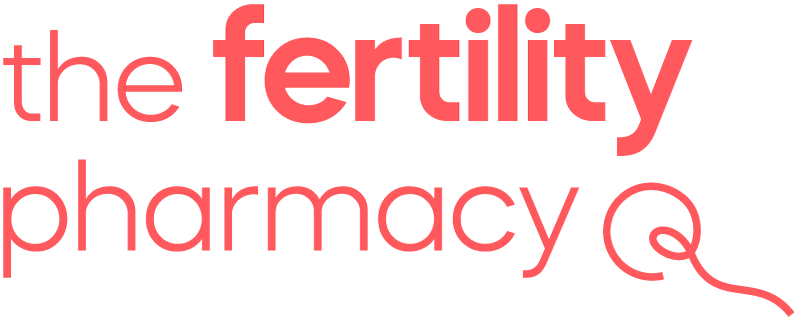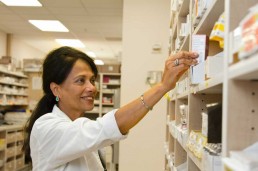A Day in the Life of The Fertility Pharmacy (and how to make the best of it)
Wendey Munro, Marketing Director
The tone of the day is generally set with the receipt of the first prescription!
There are good days and there are not so good days – there are ‘good’ prescriptions and ‘not so good’ prescriptions.
What is the difference between the two?
It is purely dependent on the accuracy and completeness of the information presented on the prescription. The prescription needs to be compliant within the regulations for it to be included in the ‘good prescription’ category.
What can you do to make it a good day for the IVF pharmacist?
Prescriptions must include: prescriber name, address, telephone number and signature, (signed in ink), date on which the prescription is written and the patient’s full name and address.
In addition, a prescription written outside of the UK must also include the prescribers Registration Number.
Obviously the prescription needs to be specific on medication, strength of medication, quantity and hopefully dosage too.
It’s like a jigsaw puzzle – if one piece is missing, it can be rather frustrating, because the pharmacist has to go looking for the elusive missing bit of blue sky, time spent doing that can take a chunk out of the day! Which ultimately adds time onto a process which is often ‘time’ critical.
How else can you help to make it a ‘good day’ for the IVF pharmacy?
The strength or quantity to be contained in capsules, lozenges, tablets etc. should be stated by the prescriber. In particular, strength of liquid preparations should be clearly stated (e.g. 125 mg/ 5 mL).
The unnecessary use of decimal points should be avoided, e.g. 3 mg, not 3.0 mg. Quantities of 1 gram or more should be written as 1 g etc. Quantities less than 1 gram should be written in milligrams, e.g. 500 mg, not 0.5 g. Quantities less than 1 mg should be written in micrograms, e.g. 100 micrograms, not 0.1 mg. When decimals are unavoidable a zero should be written in front of the decimal point where there is no other figure, e.g. 0.5 mL, not .5 mL. Use of the decimal point is acceptable to express a range, e.g. 0.5 to 1 g. ‘Micrograms’ and ‘nanograms’ should not be abbreviated. Similarly ‘units’ should not be abbreviated.
The term ‘millilitre’ (ml or mL) is used in medicine and pharmacy, and cubic centimetre, c.c., or cm3 should not be used. (The use of capital ‘L’ in mL is a printing convention throughout the BNF; both ‘mL’ and ‘ml’ are recognised SI abbreviations).
If there are missing jigsaw pieces which do need chasing, it probably means that the day is going down hill at this stage!
We have experienced some bad days over the past few years – we have received badly written prescriptions which led to confusion and mistakes for the clinic, the patient and the pharmacist.
A final note on the correct inclusions for the prescription – if there are specific needles and syringes, or any other ancillaries you normally expect to be included in a delivery to a patient, please tell us when submitting the prescription. We know different clinics have different preferences.
What can we do to help you, the prescriber to make it a ‘good day’ ?
The pharmacy will screen and validate the prescription – and if there is actually a missing piece will liaise both with the prescribing clinic and the patient to ensure the details are complete prior to dispensing.
We know every clinic works differently, we know every clinic makes different prescribing choices, different treatment regimes, we know every clinic specialises in different patient groups – so with that knowledge we certainly know we must be flexible, respond swiftly and efficiently to keep every clinic happy!
Screening and validation includes checking the prescribers credentials, checking the medication is available and even suggesting better alternatives when appropriate. This generally includes advising the clinic that there is sometimes a bio-equivalent, but lower cost and more easily available option.
Currently only prescriptions from within the 27 countries of the EEA and Switzerland are legally dispensable in the UK – prescriptions generated outside of the EEA are not legal in the UK.
Is this a Big Problem?
For our pharmacy it is an opportunity to help out even more, we now offer a Prescription Conversion Service, which means that if the prescription is generated outside of the 27 + Switzerland, we can review the prescription, validate with the clinic directly if necessary and convert to a UK legal prescription.
So instead of patients being reluctant to choose a clinic in say, Russia, this is no longer a reason to exclude countries previously unavailable to UK patients.
We are encouraged by the levels of gratitude afforded to our pharmacy team from the non UK clinics for the extra level of attention we give to their UK patients.
So, thank you for reading this article – our shared understanding of writing prescriptions for IVF medications should ensure we are helping each other to be having a good day every day.

